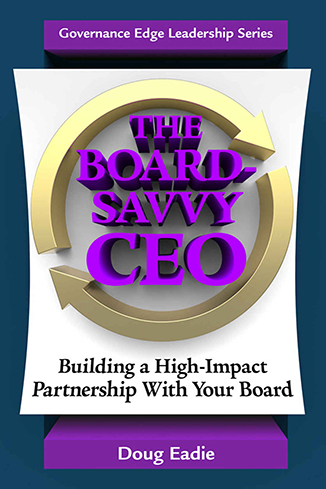Since two extraordinary nonprofit leaders – Lynne Thomas Gordon and Michelle Mason – will be recording a podcast for this blog on the recently updated values statement of the Association Forum, I thought it would be useful to share the following thoughts on core values, drawing on the fifth chapter of my book Extraordinary Board Leadership (Jones and Bartlett, Second Edition, 2009). Lynne, the former CEO of the American Health Information Management Association, is Incoming Chair of the Forum, and Michelle is the Forum’s President and CEO.
A core organizational value is a cherished belief or principle that is so important that it helps to define your nonprofit in a fundamental way. It is not a statement of fact, but rather an aspiration, and it can be seen as completing the sentence, “We believe in (that) . . .” For example, a somewhat Jeffersonian core value that many people pay at least lip service to is “All people should have an equal opportunity to develop their talents and put them to work in making a living.” Core values establish a fundamental framework that governs how your nonprofit develops and carries out programs, how it delivers services, and how it relates to customers. For example, “We believe that our customer is always right” is a core value, as is “We believe that our clients should be treated with sensitivity.” Core values also govern how the people working in your organization should interact with each other, thereby fundamentally defining your nonprofit’s internal culture. For example, “We believe that communication in our organization should be open and honest” is a core cultural value.
Your nonprofit’s core values make up an ethical framework to govern its dealings with both the external and internal environments. The values create a kind of collective conscience that should cause severe guilt pangs if any of your values are contradicted in a major way. For example, the Strategic Governing Team of a local community development corporation determined that it believed in: “community diversity; assistance to residents in need; the importance of residents who receive assistance making an investment in the improvements; preservation of community property values; home ownership; the corporation’s organizational autonomy; not trying to be all things to all people.”
When you examine the foregoing values statement closely, you will see some inbuilt tension. Clearly, moving too far in the direction of realizing a particular value in practice might result in an unacceptable violation of another value. For example, take two points in this community development corporation’s statement: “assistance to residents in need” and “the importance of residents who receive assistance making an investment in the improvements.” If this CDC were merely concerned with assisting needy residents, then it could concentrate on getting the housing rehabilitation loans out to the people as fast as possible. However, also placing a value on their clients’ paying the loans back meant that the CDC had to screen potential clients to determine the likelihood of repayment. In my experience, seriously developed values statements inevitably include the potential for conflict, and hence call for reconciliation and creative balance, which is one of the preeminent tasks of a truly high-impact board. If all you do is fashion one of those pithy paragraphs, you cannot spot the potential conflict, and hence the need for reconciliation.
The internal, detailed values statement that your nonprofit’s Strategic Governing Team is responsible for developing can be a powerful planning tool in the hands of a determined board and CEO. Within the Strategic Change Portfolio planning stream, your nonprofit’s values statement can be employed in two ways. First, it can be a source of strategic issues, in the form of serious conflict between values or significant shortfalls in the observation of particular values in practice. Take an element of the values statement of a large urban medical system’s foundation: “access to high quality health care for all local residents.” Evidence that access was significantly declining would automatically surface the issue, “Should we take action to expand access, in keeping with our core values?” Your board might also employ the values statement as a backdrop in the process of reviewing annual operational objectives, asking two basic questions: Do any of the proposed objectives contradict one or more of our core values? Do our proposed objectives help us to realize these core values in practice?






